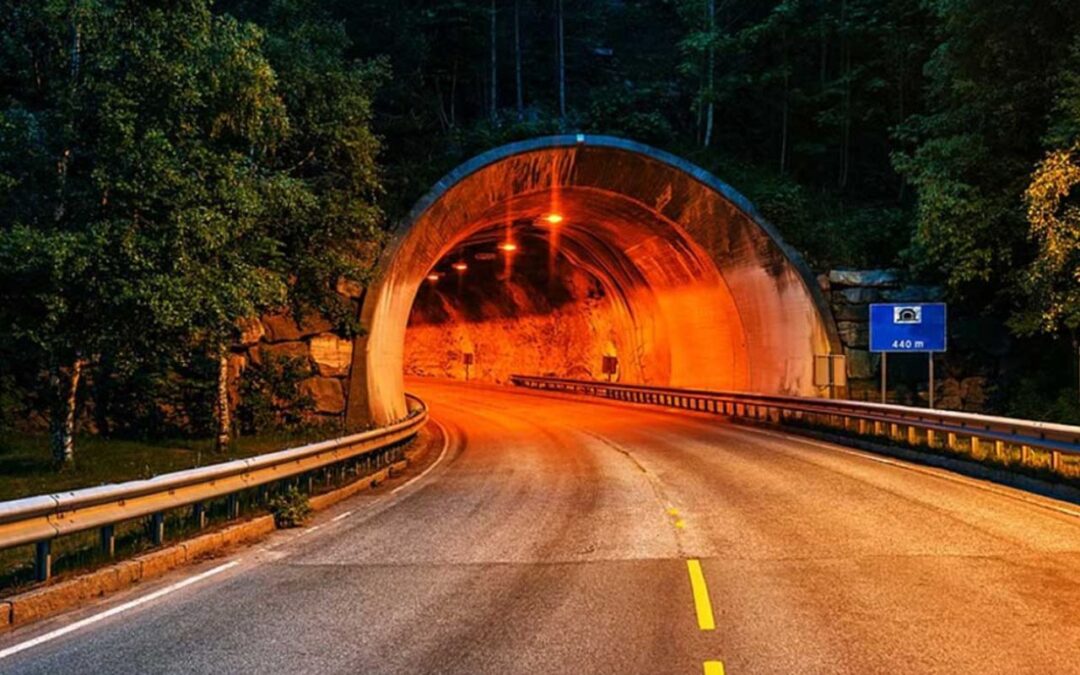Synopsis– Facing criticism for its environmental impact, prioritising elites, high tolls, and planning violations, Bengaluru’s ₹17,698 crore Twin Tunnel Project aims to ease traffic between Hebbal and Silk Board – continuing an inevitable debate over car-centric growth and sustainable urban mobility.
Bengaluru’s ₹17,698 crore Twin Tunnel Project will change how the city moves and improve urban mobility by addressing and relieving traffic congestion. The project, which will connect Hebbal to Silk Board, is BBMP’s largest and most ambitious project and has garnered hope and confusion over the solution for Bengaluru’s transport geography.
Project Vision & Technical Overview
- Route & Design: The 16.7 km twin tunnel, from Hebbal Esteem Mall Junction to Silk Board KSRP Junction, will have a three-lane unidirectional tube at a depth of 125 ft underground, and will be completed with eight Tunnel Boring Machines (TBMs). for an estimated cost of ₹17,698 crore using a Construct-Operate-Transfer (BOOT) model, by the year of 2029.
- Entry & Exit Ramps: Entry and exit ramps are designed at strategic junctions, including Mekhri Circle, Racecourse Road, and Lalbagh, to allow for entry and exit without major disruption to surface infrastructure.
- Construction Mandate: Eight high-capacity Tunnel Boring Machines (TBM) will be used for one of India’s largest-ever tunnelling projects in an urban context.
- Cost and Funding: The estimated cost of ₹17,698 crore will be funded under a BOOT (Build-Own-Operate-Transfer) model with a concession period of 34 years. BBMP intends to use Viability Gap Funding (VGF) to help attract private sector capital.
- Timeline and Execution: Tunnelling is expected to take 24–26 months, followed by 12 months for electrical, mechanical and systems installation. Completion is expected to occur by the end of 2029. The project will be implemented by Bengaluru Smart Mobility Infra Ltd. (B-SMILE).
Promised Benefits
- Travel Efficiency: Commute times between Hebbal and Silk Board may fall from 90 minutes to only 20 – 45 minutes, transforming the north-south mobility of the city.
- Traffic Decongestion: The tunnel is designed to alleviate congestion on the Outer Ring Road (ORR) and the Central Business District by taking vehicles underground.
- Safety & Speed: Signal-free, controlled access is expected to improve travel speeds and safety on the roads.
- Economic Impact: The project may serve to improve logistics, attract new real estate development, and also add to investor confidence in the infrastructure of Bengaluru.
- Minimal displacement: Only approximately 45 acres of land will be needed for access ramps overall, reducing the necessity of acquiring large areas of surface property and redeveloping land.
Tolling & Access Details
- Toll Charges: The expected toll charges are approximately ₹19–₹20 per kilometer, generating a round-trip from the Hebbal–Silk Board cost of about ₹330. Consequently, this pricing model raises the question of affordability to the average commuter.
- Vehicle Access: Initially, only access for private four-wheelers and BMTC buses is allowed. Two-wheelers, auto-rickshaws, and heavy trucks shall be excluded from the tunnels.
- Construction Logistics: After tunnelling (24–26 months), systems and facilities such as toll plazas, surveillance cameras, and emergency response facilities will be installed in the final 12-month period.
- Affordability Concerns: Critics suggest that the toll and restricted access may leave lower and middle-income commuters, who could benefit from more affordable/ informal transport opportunities, unable to access the project.
Criticism, Concerns & Controversies
- Redundancy: The proposed tunnel will cross paths with future Metro Blue Line and Suburban Rail routes and create redundancy and a decline in public transport ridership.
- Elitist Design: The report favours private cars and BMTC buses while leaving the vast majority who rely on public transport or informal transport out.
- DPR Flaws: There are allegations against the DPR claiming that it was plagiarized, base traffic counts were over 15 years old, and the questionable credentials of the consultant reduce confidence in project delivery.
- Environmental Risks: The project involves boring tunnels through hard rock. Other critics argue that this could cause geological instability as it appears some environmental assessments neglected this fact.
- Urban Planning Violation: The project conflicts with Bengaluru’s MDP 2031, which advocates mass transit and reducing carbon emissions.
- Regulatory Discretion: BBMP are alleged to have proceeded with the project without any clearances from the pathways prescribed by BMLTA and other relevant authorities.
- Public opposition: Prominent voices of the Civic community like Kiran Mazumdar-Shaw, Mohandas Pai, and Tejasvi Surya have publicly denounced the project.
- Cost-Benefit Concerns: The high road price (₹330) per trip and low volume of users raise questions about economic efficiency and social equity.
Conclusion
Bengaluru is at a turning point: follow the road to centric infrastructure car park or choose inclusive, sustainable mobility. The Twin Tunnel will provide speed, but it depends on climate responsiveness, equity, and public accountability. Whether it becomes a monument of progress or simply deepens the chaos of urban life will depend on ongoing civic scrutiny and integrated, collaborative urban planning.
Written by N G Sai Rohith


